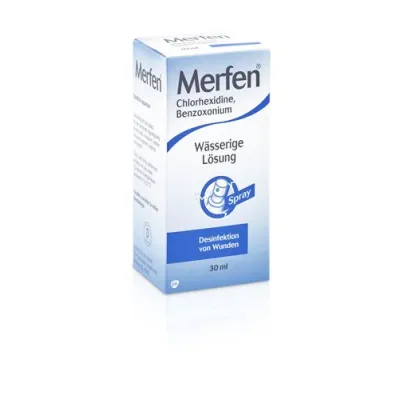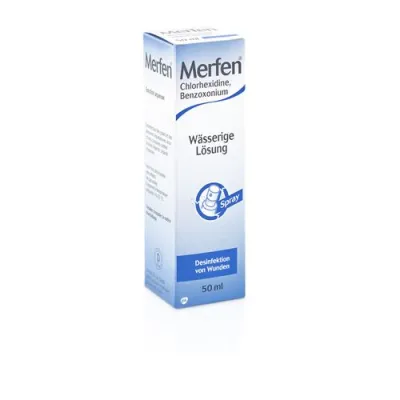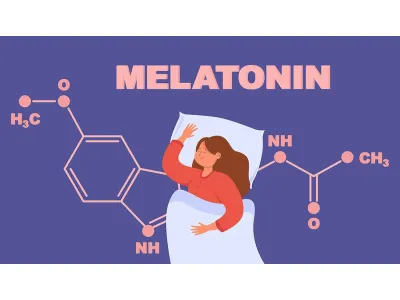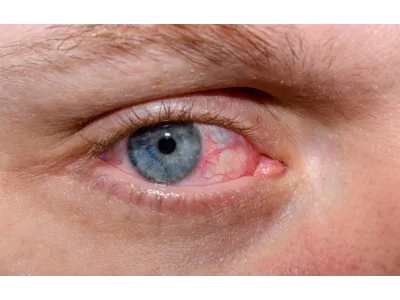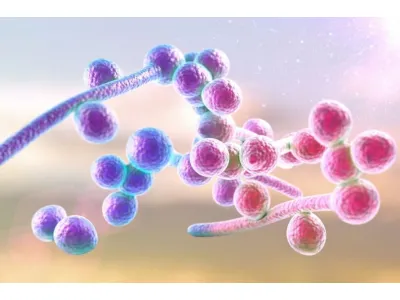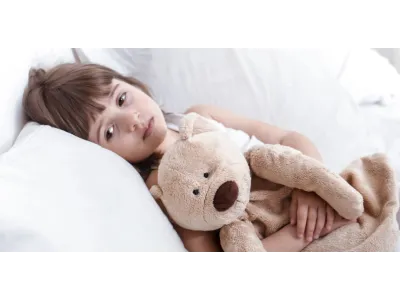Heal and Protect: The Ultimate Disinfectant for Wounds, Burns, and Bites
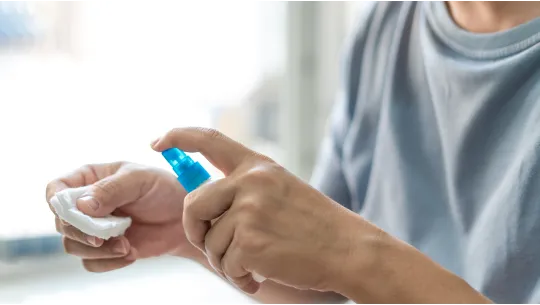
Correct treatment and disinfection of wounds, burns and bites prevents infections, promotes healing and minimizes the risk of complications. In order to prevent future complications after trams, it is necessary to choose a disinfectant that will help avoid the reproduction of bacteria, the occurrence of infection and thus speed up healing.
Wounds, Burns, and Bites: Characteristics and Possible Causes
Wounds, burns and bites are common injuries that vary greatly in severity and require different methods of care and treatment. Knowing the characteristics and causes of each of them helps in effective treatment and prevention of complications.
Wounds are injuries that break the skin or other body tissues. They range from minor cuts and bruises to deep lacerations or punctures. The main signs of a wound include bleeding, pain, swelling, and sometimes bruising. Open wounds are susceptible to infection if not properly cleaned and cared for. Wounds result from a variety of incidents, including falls, sharps accidents, or blunt force trauma. Surgical incisions are also classified as wounds, although they are made medically for the purpose of treatment.
Burns are damage to the skin or deeper tissues due to warmth, chemical substances, radiation, or friction. Burn severity is classed by degree, with first degree being the least severe, affecting only the outer layer of skin, and third degree being the most severe, affecting deeper tissues. Burn signs include redness, ache, swelling, blistering (second-degree burns), and charred or white skin (third-degree burns).
Common reasons for burns include contact with open flames, hot objects, chemical spills, excessive sun exposure, and burns from rubbing against objects which include ropes or carpets.
Bites are injuries caused by an animal or insect bite. Symptoms vary depending on the type of bite and include wounds, ache, swelling, redness, and sometimes venom injection, which causes headaches consisting of nausea, weak point, or hypersensitive reactions.
Bites are regular because of domestic animals consisting of dogs and cats, however they also consist of encounters with wild animals. On the other hand, insect bites are because of mosquitoes, spiders, fleas, ticks and bedbugs. The severity and threat related to bites relies upon the species of animal or insect, the region of the body bitten, and the individual's immune reaction.
Challenges in Treating Wounds, Burns, and Bites
One of the immediate challenges in treating those varieties of injuries is handling the associated pain. The stage of ache varies significantly depending on the severity of the harm and person ache tolerance. Wounds cause sharp, excessive pain or a dull, aching sensation, especially if they are deep or contain nerve damage.
Burns regularly cause extreme pain, partially because nerve endings are exposed or damaged. The ache persists for a long time, even if the burn heals. Bites also cause a variety of painful sensations, from the sharp initial bite to the lingering soreness as a result of venom or allergies.
Pain control requires a combination of medicinal drugs, which includes topical analgesics, oral pain relievers, or, in intense instances, prescription ache relievers. However, balancing ache alleviation with the risk of drug side effects or addiction is a hard task.
Risk of infection
Infection is a serious problem inside the wounds, burns and bites. The barrier feature of the skin is disrupted, making it easier for microorganisms or different pathogens to go into the body and cause infections. Open wounds are mainly prone to bacterial infections, which sluggish recovery and cause serious complications.
Burns, especially second and third degree, have an excessive threat of contamination due to damage to the skin's protective barrier. Bites also carry bacteria from the mouth or sting of an animal or insect, and some insect bites can immediately transmit disease. Preventing infection calls for cautious wound care, as well as proper cleansing, sterilization, and, in a few cases, antibiotics. However, overuse of antibiotics leads to resistance.
Scar formation
Scarring is a natural part of the healing process, but can become a serious problem, especially with severe injuries. Wounds leave scars if they are deep or do not heal well, and often require additional treatment to minimize scarring.
Burns also result in extensive scarring, characterized by thick, dense clumps of tissue that interfere with movement and cause cosmetic problems. Bites, depending on their severity and location, lead to scarring, especially if they are infected or not cared for properly.
Early intervention with proper care, use of scar reduction products such as silicone plates or gels, and in some cases, surgical revision or laser therapy are needed to minimize scarring. However, these treatments are expensive and may not completely eliminate scarring.
Treating Wounds, Burns, and Bites with Antiseptic Solutions
Antiseptics are substances that slow down or stop the growth of microbes and bacteria and prevent infection of damaged skin. The correct use of an antiseptic greatly affects the healing process, reduces the risk of complications and speeds up recovery.
Pay attention to Merfen spray - a disinfectant with the active substances of chlorhexidine digluconate and benzoxonium chloride. It acts on microorganisms responsible for inflammation. The action of the aqueous solution of Merfen is preserved even in the presence of blood and pus. The use of an aqueous solution of Merfen is painless. The drug is suitable for disinfecting wounds and injuries, such as scratches and wounds, cuts, small burns (superficial, small burns of the 1st degree) and insect bites.
Merfen aqueous solution colorless spray 30 ml
Merfen aqueous solution is a disinfectant with the active ingredients chlorhexidine digluconate and benzoxonium chloride. It acts on the microorganisms responsible for inflammation. The effect of Merfen aqueous solution is maintained even in the presence of blood and pus. The application of Merfen aqueous solution is painless. The preparation is suitable for disinfecting wounds and injuries, such as scratches and abrasions, cuts, minor burns (superficial, small-area burns of the 1st degree) and insect bites. Swissmedic-approved patient informationMerfen aqueous solutionVERFORA SAAMZVWhat is Merfen aqueous solution and when is it used ?Merfen aqueous solution is a disinfectant with the active ingredients chlorhexidine digluconate and benzoxonium chloride. It acts on the microorganisms responsible for inflammation. The effect of Merfen aqueous solution is maintained even in the presence of blood and pus. The application of Merfen aqueous solution is painless. The preparation is suitable for disinfecting wounds and injuries, such as scratches and abrasions, cuts, minor burns (superficial, small-area burns of the 1st degree) and insect bites. What should be considered?Large, heavily soiled and deep wounds, as well as bite and puncture wounds require medical treatment (including the risk of tetanus). If the extent of a wound remains the same for some time or if the wound does not heal within 10 to 14 days, a doctor's visit is also necessary. The same applies if the edges of the wound are very red, the wound suddenly swells, is very painful or the injury is accompanied by fever (danger of blood poisoning). When should Merfen aqueous solution not be used?You must not use Merfen aqueous solution if you are on chlorhexidine digluconate, benzoxonium chloride, or quaternary ammonium compounds or any of the excipients in this preparation are allergic. When is caution required when using Merfen aqueous solution?Merfen is for external use only. Avoid getting Merfen in contact with the eyes, ears (hearing canal) and mucous membranes (such as the mouth and nose). If you accidentally get Merfen in your eyes, please rinse immediately with plenty of water. Merfen must not be taken. Merfen should not be used too frequently or for a long period of time without medical advice. If you experience skin irritation or unusual sensitivity, you should stop using Merfen Aqueous Solution. In children under the age of 2 years, the preparation may only be used if prescribed by a doctor. Caution should be exercised in newborns, especially premature infants. Merfen aqueous solution can cause chemical skin burns. After disinfection, allow the skin to dry before applying a light bandage. To prevent skin irritation, Merfen aqueous solution should not be used under a tight-fitting bandage. Due to the low rate of absorption of the active ingredients chlorhexidine digluconate and benzoxonium chloride, no interactions with other medicinal products are expected. Tell your doctor, pharmacist or druggist if you suffer from other illnesses,have allergies ortake other medicines (including those you bought yourself!) or use them externally!Contact your doctor if you need to treat extensive injuries or burns. Can Merfen aqueous solution be used during pregnancy or breastfeeding?Pregnancy:The preparation can used in small amounts (on small wounds) during pregnancy. There are no adequate data from the use of chlorhexidine digluconate and benzoxonium chloride in pregnant women. The potential risk for humans is unknown; however, it is believed to be very low because chlorhexidine digluconate and benzoxonium chloride are poorly absorbed following topical application. Consult your doctor, pharmacist or druggist if you wish to use the product during pregnancy, especially during the first trimester. Breastfeeding:It is not known whether chlorhexidine digluconate and benzoxonium chloride are excreted in human milk. During breastfeeding, Merfen aqueous solution can be used in small amounts (on small wounds), except on the chest. Before breastfeeding, as a general precaution, you should wash your nipples thoroughly with water. How to use Merfen aqueous solution?Use this medicine as described below or as directed by your pharmacist/pharmacist. Merfen aqueous solution is for cutaneous use only. Adults and children from 2 years:Merfen aqueous solution:The solution directly or with the help of a compress Apply to the skin and injuries 1-2 times a day. Take care that Merfen aqueous solution does not collect in skin folds. After disinfection, allow the skin to dry before applying a light bandage. Do not use Merfen aqueous solution under a tight-fitting bandage. For insect bites: Put a few drops of Merfen aqueous solution on the bite and let it dry. Merfen aqueous solution, spray:Prior to first use, pump several times until the spray comes out. Spray 1-2 sprays directly onto the areas to be treated. Since the container only contains aqueous solution (without propellant), it works in any position, even if the spray head is pointing downwards. In this case, a few pumping movements are necessary before the first spray emerges. Take care that Merfen aqueous solution does not collect in skin folds. After disinfection, allow the skin to dry before applying a light bandage. Do not use Merfen aqueous solution under a tight-fitting bandage. In children under the age of 2 years, the preparation may only be used if prescribed by a doctor. If you use more Merfen aqueous solution than you should, or if you accidentally take Merfen aqueous solution, contact your doctor. Follow the dosage given in the package leaflet or prescribed by your doctor. If you think the medicine is too weak or too strong, talk to your doctor, pharmacist or druggist. What side effects can Merfen aqueous solution have?Like all medicines, Merfen aqueous solution can cause side effects, although not everyone gets them. Certain side effects are very rare (affecting less than 1 in 10,000 people) but can be serious: difficulty breathing, dizziness (anaphylactic reaction) , swelling of the face and neck (angioedema). If you experience any of the symptoms listed above (which may be signs of an allergic reaction), stop using Merfen aqueous solution and seek medical advice immediately. The following side effects are rare (affects 1 to 10 patients in 10,000): Skin irritation. The following side effects are very rare (occur in less than 1 in 10,000 patients): hives (urticaria). The following side effects occur with an unknown frequency: Chemical burns in newborn babies (see section «When should caution be used with Merfen?»). If you notice side effects that are not described here, you should inform your doctor, pharmacist or druggist. What else needs to be considered?Medicines should be kept out of the reach of children. Store at room temperature (15-25°C). The medicinal product may only be used up to the date marked “EXP” on the container. In contact with chlorhexidine, Javel water can cause the laundry to turn brown. Laundry tests have shown that detergents containing one or more bleaches (e.g. perborate) remove these stains. Your doctor, pharmacist or druggist can provide you with further information. What does Merfen aqueous solution contain?1 ml aqueous solution contains 5 mg chlorhexidine digluconate and 1 mg benzoxonium chloride as well as excipients. Approval number51682 (Swissmedic) Where can you get Merfen aqueous solution? What packs are available?In pharmacies and drugstores, without a doctor's prescription. Packages of 3 ml, 15 ml, 50 ml and 100 ml. Spray: Packs of 30 ml and 50 ml. Authorization holderVERFORA SA, 1752 Villars-sur-Glâne. This leaflet was last checked by the Medicines Agency (Swissmedic) in July 2015. ..
28.57 USD
- Wound care: For cuts, scrapes, and puncture wounds, cleaning the wound is the first step in preventing infection. After the bleeding has stopped, gently flush the wound with water to remove debris. Apply a thin layer of antiseptic solution or cream to the wound and the surrounding area. Products containing iodine, hydrogen peroxide, or chlorhexidine are commonly used because of their effectiveness in killing bacteria. However, it is important to note that some antiseptics are too harsh for sensitive skin or deep wounds, so they should be chosen carefully.
- Burn Treatment: Burn treatment begins with cooling the burn with running water to reduce pain and swelling. After that, apply an antiseptic solution that prevents infection. For minor burns, use an antiseptic spray, such as Merfen Colorless Aqueous Solution Spray, or a gel specially designed to be gentle on burned skin. Avoid alcohol-based antiseptics, which cause burn irritation, and cover the area with a sterile bandage after application.
- Treatment of bites: through the bites of animals and insects, bacteria and sometimes poison enter the skin. After cleaning the bite site with soap and water, apply an antiseptic solution. For bites, antiseptic solutions containing lidocaine or pramoxine are also useful, which help relieve pain and itching. If there is a risk of disease transmission (for example, from ticks or rabid animals), medical attention should be sought.
Merfen aqueous solution colorless spray 50 ml
Merfen aqueous solution is a disinfectant with the active ingredients chlorhexidine digluconate and benzoxonium chloride. It acts on the microorganisms responsible for inflammation. The effect of Merfen aqueous solution is maintained even in the presence of blood and pus. The application of Merfen aqueous solution is painless. The preparation is suitable for disinfecting wounds and injuries, such as scratches and abrasions, cuts, minor burns (superficial, small-area burns of the 1st degree) and insect bites. Swissmedic-approved patient informationMerfen aqueous solutionVERFORA SAAMZVWhat is Merfen aqueous solution and when is it used ?Merfen aqueous solution is a disinfectant with the active ingredients chlorhexidine digluconate and benzoxonium chloride. It acts on the microorganisms responsible for inflammation. The effect of Merfen aqueous solution is maintained even in the presence of blood and pus. The application of Merfen aqueous solution is painless. The preparation is suitable for disinfecting wounds and injuries, such as scratches and abrasions, cuts, minor burns (superficial, small-area burns of the 1st degree) and insect bites. What should be considered?Large, heavily soiled and deep wounds, as well as bite and puncture wounds require medical treatment (including the risk of tetanus). If the extent of a wound remains the same for some time or if the wound does not heal within 10 to 14 days, a doctor's visit is also necessary. The same applies if the edges of the wound are very red, the wound suddenly swells, is very painful or the injury is accompanied by fever (danger of blood poisoning). When should Merfen aqueous solution not be used?You must not use Merfen aqueous solution if you are on chlorhexidine digluconate, benzoxonium chloride, or quaternary ammonium compounds or any of the excipients in this preparation are allergic. When is caution required when using Merfen aqueous solution?Merfen is for external use only. Avoid getting Merfen in contact with the eyes, ears (hearing canal) and mucous membranes (such as the mouth and nose). If you accidentally get Merfen in your eyes, please rinse immediately with plenty of water. Merfen must not be taken. Merfen should not be used too frequently or for a long period of time without medical advice. If you experience skin irritation or unusual sensitivity, you should stop using Merfen Aqueous Solution. In children under the age of 2 years, the preparation may only be used if prescribed by a doctor. Caution should be exercised in newborns, especially premature infants. Merfen aqueous solution can cause chemical skin burns. After disinfection, allow the skin to dry before applying a light bandage. To prevent skin irritation, Merfen aqueous solution should not be used under a tight-fitting bandage. Due to the low rate of absorption of the active ingredients chlorhexidine digluconate and benzoxonium chloride, no interactions with other medicinal products are expected. Tell your doctor, pharmacist or druggist if you suffer from other illnesses,have allergies ortake other medicines (including those you bought yourself!) or use them externally!Contact your doctor if you need to treat extensive injuries or burns. Can Merfen aqueous solution be used during pregnancy or breastfeeding?Pregnancy:The preparation can used in small amounts (on small wounds) during pregnancy. There are no adequate data from the use of chlorhexidine digluconate and benzoxonium chloride in pregnant women. The potential risk for humans is unknown; however, it is believed to be very low because chlorhexidine digluconate and benzoxonium chloride are poorly absorbed following topical application. Consult your doctor, pharmacist or druggist if you wish to use the product during pregnancy, especially during the first trimester. Breastfeeding:It is not known whether chlorhexidine digluconate and benzoxonium chloride are excreted in human milk. During breastfeeding, Merfen aqueous solution can be used in small amounts (on small wounds), except on the chest. Before breastfeeding, as a general precaution, you should wash your nipples thoroughly with water. How to use Merfen aqueous solution?Use this medicine as described below or as directed by your pharmacist/pharmacist. Merfen aqueous solution is for cutaneous use only. Adults and children from 2 years:Merfen aqueous solution:The solution directly or with the help of a compress Apply to the skin and injuries 1-2 times a day. Take care that Merfen aqueous solution does not collect in skin folds. After disinfection, allow the skin to dry before applying a light bandage. Do not use Merfen aqueous solution under a tight-fitting bandage. For insect bites: Put a few drops of Merfen aqueous solution on the bite and let it dry. Merfen aqueous solution, spray:Prior to first use, pump several times until the spray comes out. Spray 1-2 sprays directly onto the areas to be treated. Since the container only contains aqueous solution (without propellant), it works in any position, even if the spray head is pointing downwards. In this case, a few pumping movements are necessary before the first spray emerges. Take care that Merfen aqueous solution does not collect in skin folds. After disinfection, allow the skin to dry before applying a light bandage. Do not use Merfen aqueous solution under a tight-fitting bandage. In children under the age of 2 years, the preparation may only be used if prescribed by a doctor. If you use more Merfen aqueous solution than you should, or if you accidentally take Merfen aqueous solution, contact your doctor. Follow the dosage given in the package leaflet or prescribed by your doctor. If you think the medicine is too weak or too strong, talk to your doctor, pharmacist or druggist. What side effects can Merfen aqueous solution have?Like all medicines, Merfen aqueous solution can cause side effects, although not everyone gets them. Certain side effects are very rare (affecting less than 1 in 10,000 people) but can be serious: difficulty breathing, dizziness (anaphylactic reaction) , swelling of the face and neck (angioedema). If you experience any of the symptoms listed above (which may be signs of an allergic reaction), stop using Merfen aqueous solution and seek medical advice immediately. The following side effects are rare (affects 1 to 10 patients in 10,000): Skin irritation. The following side effects are very rare (occur in less than 1 in 10,000 patients): hives (urticaria). The following side effects occur with an unknown frequency: Chemical burns in newborn babies (see section «When should caution be used with Merfen?»). If you notice side effects that are not described here, you should inform your doctor, pharmacist or druggist. What else needs to be considered?Medicines should be kept out of the reach of children. Store at room temperature (15-25°C). The medicinal product may only be used up to the date marked “EXP” on the container. In contact with chlorhexidine, Javel water can cause the laundry to turn brown. Laundry tests have shown that detergents containing one or more bleaches (e.g. perborate) remove these stains. Your doctor, pharmacist or druggist can provide you with further information. What does Merfen aqueous solution contain?1 ml aqueous solution contains 5 mg chlorhexidine digluconate and 1 mg benzoxonium chloride as well as excipients. Approval number51682 (Swissmedic) Where can you get Merfen aqueous solution? What packs are available?In pharmacies and drugstores, without a doctor's prescription. Packages of 3 ml, 15 ml, 50 ml and 100 ml. Spray: Packs of 30 ml and 50 ml. Authorization holderVERFORA SA, 1752 Villars-sur-Glâne. This leaflet was last checked by the Medicines Agency (Swissmedic) in July 2015. ..
39.73 USD
Disclaimer: The article contains information on the treatment of wounds, burns, bites and is not medical advice. It is extremely important to consult a qualified physician for specific advice, especially in the case of serious or complex injuries. Any disinfectant should be used with caution, following the manufacturer's instructions and taking into account any potential allergies or skin sensitivities.
M. Wüthrich

